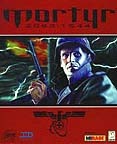Mortyr was pretty to look at back in 1999, but it was never, ever fun...
Perhaps Mirage should’ve looked further into marketing Mortyr as a tool for designing virtual building walkthroughs, because the game’s locales appear to be the only aspect of the game that was fully realized. Mortyr’s combat mechanics are deadly dull and astonishingly frustrating in equal measure. Enemy soldiers wriggle and dash left and right, then stop and ping the player with a direct hit with every single shot. To be fair, Mortyr wasn’t the only game released in the late ‘90s and early ‘00s in which the enemy AI was so dumb its aim was perfect. Even big titles like Kingpin -- which was released at around the same time as Mortyr -- failed to encode an essential touch of imperfection in its computer opponents’ skill with a weapon; distance, motion, and the type of firearm used made no difference…if the player was visible, that player got shot. In Mortyr, a handful of spastic Nazis can reduce Sebastian to a bloody pulp across a wide field full of obstacles before the hero can even draw a bead on them.
Jiggly Germans aside, I was never quite clear on exactly what Sebastian was trying to accomplish throughout the course of the game. Thinning the ranks of the Third Reich is usually enough of an excuse to lay hands on a Schmeisser, but the smattering of diary entries and personal notes that I occasionally found in conspicuous locations kept hinting at more of a story than was actually presented. It wasn’t long after Sebastian made his leap back to the future that I completely forgot about the weather-controlling alien artifact; the move from 1944 to 2093 was, by that point in the game, just an excuse to shoot some Nazi robots.
I did enjoy the design and function of the futuristic weapons, even if most of them were simply copies of the WWII-era guns. I also enjoyed the periodic snippets of written clues that I mentioned earlier, even if they amounted to nothing. That zero-sum appeal even applies to Mortyr’s beautiful appearance versus its lack of proper function. Anyone who looks back on this old title with any degree of fondness probably remembers it for its architecture and not for their distaste at trying to gun down an elite soldier while he joggles around like a caffeinated ferret.

